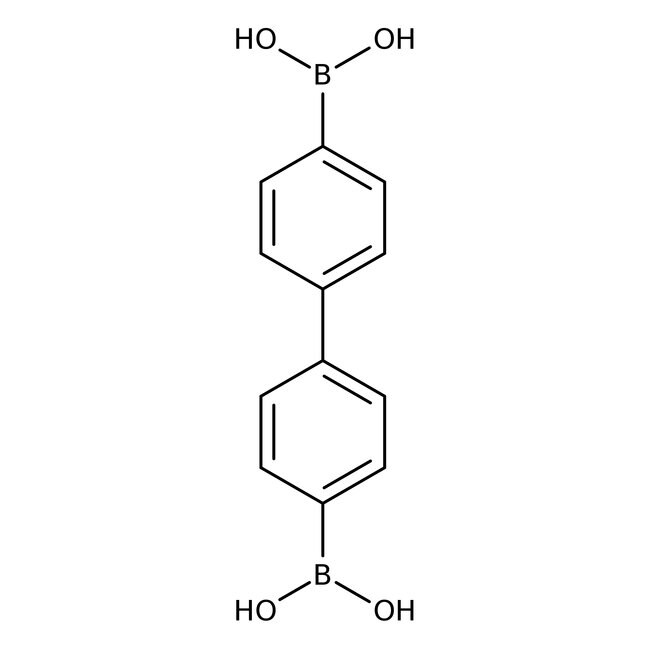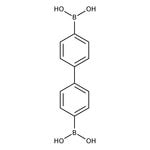Search Thermo Fisher Scientific
Biphenyl-4,4'-diboronic acid, 94%, Thermo Scientific Chemicals



Biphenyl-4,4'-diboronic acid, 94%, Thermo Scientific Chemicals
Chemical Identifiers
Specifications
Description
This Thermo Scientific Chemicals brand product was originally part of the Alfa Aesar product portfolio. Some documentation and label information may refer to the legacy brand. The original Alfa Aesar product / item code or SKU reference has not changed as a part of the brand transition to Thermo Scientific Chemicals.
Biphenyl-4,4′-diboronic acid is used in the preparation of cycloparaphenylenes through Suzuki coupling. It is also employed in the synthesis of 1,3,2-diazaboroine derivatives, which is useful for organic thin-film transistor applications. It plays an important role in the preparation of arylboronates from reactions with catechol, dihydroxynaphthalene and diaminobenzenedithiol, which finds application as organic field-effect transistors and light emitting diodes.
Solubility
Soluble in water.
Notes
Incompatible with strong oxidizing agents.
Figures
Documents & Downloads
Certificates
Frequently asked questions (FAQs)
Citations & References
Safety and Handling
Classification of the substance or mixture
CLP classification - Regulation(EC) No 1272/2008
Label Elements
Signal Word
Warning
Hazard Statements
H315 - Causes skin irritation
H319 - Causes serious eye irritation
H335 - May cause respiratory irritation
Precautionary Statements
P280 - Wear protective gloves/protective clothing/eye protection/face protection
P302 + P352 - IF ON SKIN: Wash with plenty of soap and water
P304 + P340 - IF INHALED: Remove person to fresh air and keep comfortable for breathing
P312 - Call a POISON CENTER or doctor if you feel unwell
P332 + P313 - If skin irritation occurs: Get medical advice/attention
P337 + P313 - If eye irritation persists: Get medical advice/attention